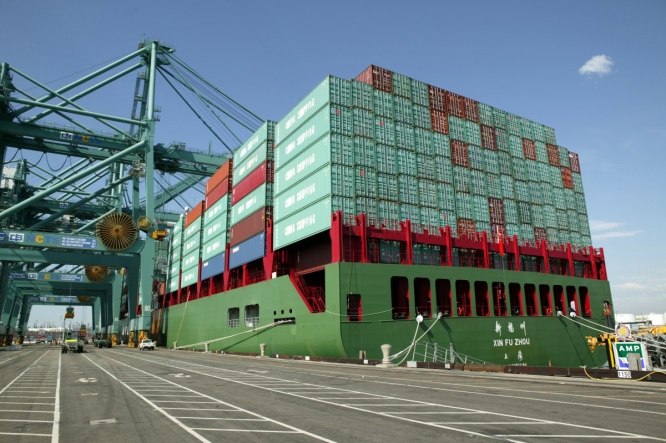Archive
Ports are open and corks are closures – the world returns to normal

Your wine is here. Someplace. The announcement of a tentative settlement to the nine-month strike affecting 29 West Coast ports may means a return to normal commerce soon. Photo courtesy Port of Los Angeles
Midwinter, and while this season has been particularly mild (regrets going to all my East Coast friends), this week we honestly can say “winter” with its recent return of cold and snow finds us wandering past brown, leafless vines and waiting for the return of spring, or spring as we know it.
While there isn’t much happening in the vineyards – except the occasional pruning in preparation for the warm weather to come – the wine industry itself never sleeps.
The biggest news nationally might be the tentative resolution of the nine-month labor dispute that paralyzed 29 shipyards in California, Washington and Oregon.
This goes beyond that case of wine you’ve been expecting, the one that’s been baking in the California sun all this time; the disruption affected many agriculture groups concerned the U.S. was losing market share due to its inability to serve export markets.
It’s estimated 80 percent of waterborne U.S. red meat exports move through West Coast ports. The leader of the Port of Los Angeles, the nation’s largest, said it would take three months “to get back a sense of normalcy.”
As you know, there’s been some talk in recent years about corks, or at least what some writers refer to as “cork taint,” a disagreeable order imparted to wood corks and then to the wine from the chemical 2,4,6-Trichloroanisole, more commonly known as TCA.
TCA is a natural compound that ‘s been been described as musty, earthy or “moldy newspaper,” which as a long-time newspaper hack I may know something about.
In many cases TCA is transferred to the wine from the cork but evidently it also can be transferred through the cork rather than from it.
While it takes only nanograms of TCA to ruin a wine’s aroma and flavors, the human threshold for detecting TCA varies by several orders of magnitude depending on an individual’s sensitivity.
Some of the best wine “super-tasters” may be able to pick up TCA in the single-digit parts per trillion.
About 20 years ago, when wine producers and consumers became aware of a growing perception of TCA taint (it one time was estimated as many as three to even five out of 10 bottles were TCA tainted), the natural cork industry saw its share of the $2 billion market slip from almost 95 percent in the 1990s to currently about two-thirds of the U.S. market.
Plastic corks and screwcaps have taken over the majority of the new portion.
Recent news, however, indicates the natural cork industry is fighting back.
The industry implemented a massive quality control and testing system in response to cork taint and last year the Cork Quality Council ran over 25 thousand tests, according to a council report.
The results reportedly showed an 81-percent reduction in TCA presence compared to eight years ago.
“We live in the shadow of a lot of problems that existed 15 or 20 years ago,” Neil Foster, president of wine-closure manufacturer M.A. Silva USA, said in a recent interview with the Press-Democrat of Santa, Rosa, Cal.
M.A. Silva sells more than 100 million closures annually, ranging from 7 cents to $3 a piece.
“The reality is today’s cork is light years ahead of where it used to be based on the technology we use to test our cork,” Foster said.
Now, if someone can come up with a solution to wine ruined from sitting nine months on a freighter in the middle of the Port of Los Angeles.